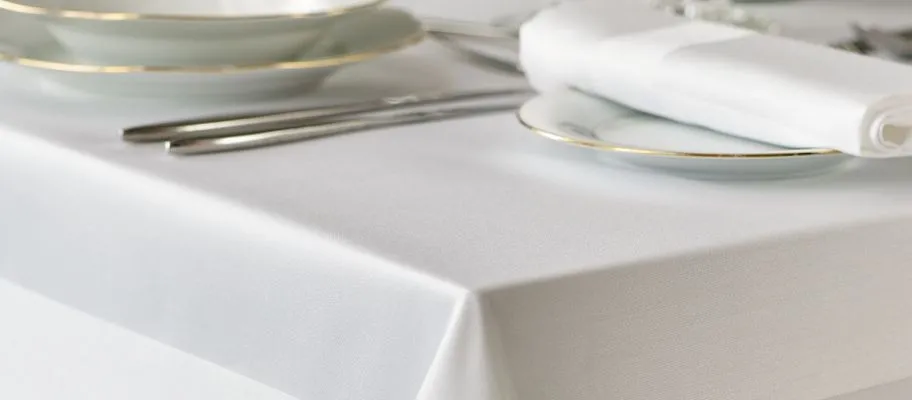Linen Textile Technologies: Discovering Modern Trends and Creative Applications in Style and Textile Industry
From lasting manufacturing approaches to sophisticated weaving innovations, the advancement of linen is improving the landscape of the fabric sector. As we dive into the worlds of creative style applications and the emergence of linen blends and crossbreed textiles, a brand-new chapter unfolds in which linen's function in future fabric developments takes center stage.
Sustainable Practices in Bed Linen Production
Sustainable methods in bed linen production have actually ended up being progressively essential in the textile market's initiatives to decrease ecological influence and advertise moral sourcing methods. Linen, an all-natural fiber originated from the flax plant, offers an array of benefits such as toughness, biodegradability, and breathability. Nevertheless, standard methods of bed linen production can include significant water usage, chemical use, and energy-intensive procedures.
To attend to these obstacles, many textile producers are taking on sustainable methods throughout the linen production process. This consists of sourcing flax from organic farms that stay clear of unsafe pesticides and chemicals, executing water-efficient retting techniques to essence fibers from the flax stalks, and making use of environmentally friendly dyes and surfaces. Furthermore, some business are buying renewable resource sources to power their manufacturing facilities and lowering waste with recycling and upcycling initiatives.
Technical Developments in Bed Linen Weaving
With the growing focus on lasting practices in bed linen manufacturing, the fabric sector is now observing a rise in technological improvements especially aimed at changing the art of bed linen weaving. These innovations are reshaping the way linen materials are produced, providing raised efficiency, top quality, and creativity in weaving techniques.
One of the essential technological innovations in bed linen weaving is the assimilation of digital looms. These innovative looms are outfitted with software application that enables intricate and detailed styles to be woven with precision. By digitizing the weaving process, makers can attain higher consistency and precision in their bed linen textiles.
Furthermore, developments in yarn spinning innovation have actually enabled the production of finer and even more durable bed linen threads - table cloths. This leads to softer and smoother linen fabrics that retain their high quality also after multiple usages and washes
In addition, the advancement of environmentally friendly dyeing processes and surfaces for bed linen materials is acquiring grip. These sustainable practices not just lower the ecological effect but additionally satisfy the increasing customer need for fairly produced textiles.
Creative Design Applications for Linen
Cutting-edge imaginative techniques are progressively shaping the imaginative layout applications for linen in the fabric market. Designers are pressing the borders of typical bed linen usage, discovering its adaptability in numerous applications. One famous pattern is the combination of linen in lasting style lines, where its environment-friendly buildings are highlighted. Bed linen's natural visual appeal and capacity to blend with other materials make it a preferred selection for producing distinct garments and accessories that cater to the eco mindful customer.
Additionally, developers are trying out with bed linen in home decor, utilizing its breathable and long lasting nature to craft stylish furnishings such as drapes, bed linen, and upholstery. The structure and drape of bed linen bring a sense of elegance and comfort to interior areas, adding a touch of beauty to modern-day homes.

Bed Linen Blends and Crossbreed Fabrics

Crossbreed fabrics, on the other hand, take the idea of blending an action additionally by integrating added components such as metallic strings, recycled materials, or conductive fibers. These ingenious fabrics not only increase the design opportunities however also introduce useful elements like conductivity, antimicrobial residential properties, or enhanced resilience. Crossbreed fabrics are significantly being utilized in different markets, including fashion, interior decoration, and technical textiles, where the demand for multifunctional products gets on the increase.
Bed linen's Duty in Future Textile Innovations

In the realm of future textile our website technologies, linen is anticipated to be a principal in the development of advanced practical textiles. Researchers and designers are discovering ways to boost linen's intrinsic qualities via technological advancements, such as incorporating clever fabrics, nanotechnology, and efficiency coatings. These advancements intend to raise linen's like it efficiency attributes, making it appropriate for a broader variety of applications, from activewear to safety clothing.
Additionally, the mix of linen with other all-natural or synthetic fibers opens limitless opportunities for creating unique fabrics with unique properties and capabilities. By leveraging bed linen's qualities and exploring ingenious blends, the textile market is poised to introduce amazing developments that deal with advancing consumer requirements and sustainability demands.
Conclusion
In verdict, the expedition of lasting practices, technical innovations, imaginative style applications, linen blends, and its role in future fabric innovations highlight the constant development of linen material in the modern style and fabric sector. With a focus on innovation and imagination, the convenience and green nature of linen make it an important product for developers and producers alike, leading the way for additional developments and improvements in the area of textiles.
As we delve into the worlds of innovative style applications and the great post to read appearance of linen blends and hybrid materials, a brand-new chapter unravels in which bed linen's function in future fabric technologies takes center phase.
Exploring the blend of linen with various other materials has led to the emergence of ingenious blends and hybrid textiles in the contemporary fabric sector. Linen blends provide a special mix of the characteristics of bed linen with those of other fibers, resulting in materials that possess improved homes such as boosted longevity, enhanced draping, and minimized wrinkling.The evolution of bed linen blends and hybrid fabrics has actually set the phase for Linen to play a crucial function in driving future textile advancements.In the realm of future textile innovations, bed linen is expected to be a crucial player in the development of sophisticated practical materials.